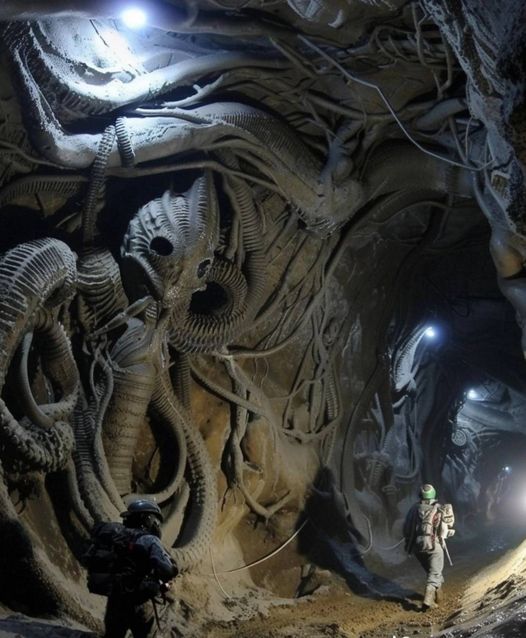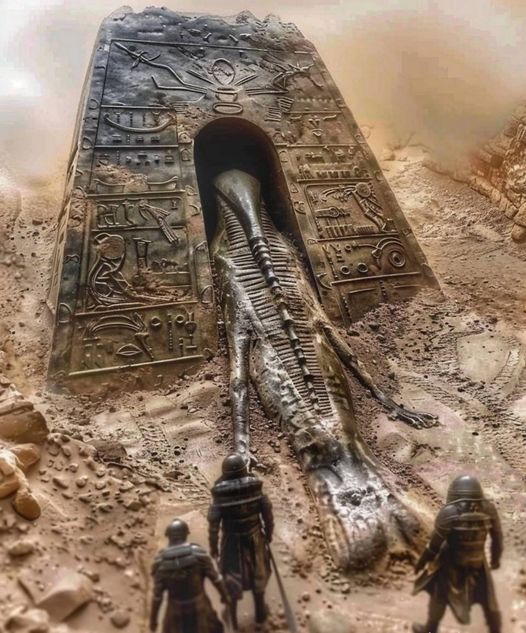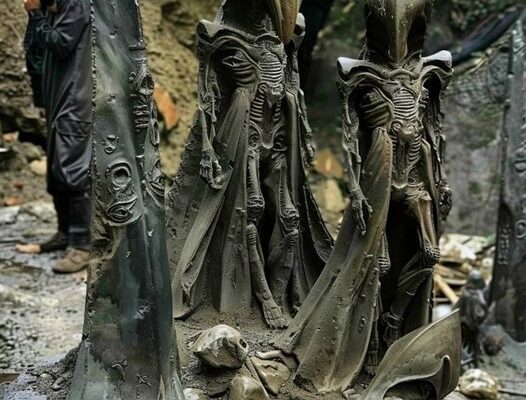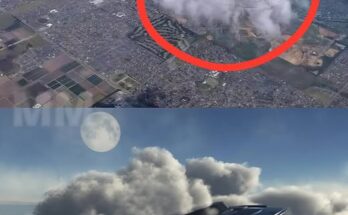
The Eye of the Sahara Desert, also known as the Richat Structure, has long intrigued scientists and explorers with its enigmatic appearance and geological significance. Recently, new discoveries beneath this colossal geological formation have sent shockwaves through the scientific community, offering fresh insights into its origins and hidden secrets. Here’s a detailed look at the groundbreaking findings and their implications.Discovery Highlights
Recent Exploration:
Advanced Imaging Techniques: Using cutting-edge satellite imagery and ground-penetrating radar, scientists have conducted detailed surveys of the Richat Structure. These advanced tools have allowed researchers to probe deeper into the subsurface layers of the formation.
Unprecedented Findings: The new data has revealed previously unknown features and formations beneath the structure, including complex geological formations and possible remnants of ancient activity.
Subsurface Discoveries:

Hidden Caverns and Tunnels: The surveys uncovered an intricate network of underground caverns and tunnels that had been concealed beneath layers of sediment and rock. These subterranean features suggest a significant geological or potentially even anthropogenic process.
Ancient Artifacts: Among the discoveries were several ancient artifacts, including tools and pottery fragments. These finds hint at past human activity or settlements in the region, challenging previous assumptions about the area’s history.
Formation Process: The new findings provide valuable insights into the formation process of the Eye of the Sahara. Scientists are revising their theories about how the structure, which is thought to be a dome-like uplift, was created. The discovery of subterranean formations may suggest more complex geological processes at play.
Historical Climate Change: The artifacts and geological features suggest that the region may have undergone significant climatic changes in ancient times. Researchers are exploring how these changes might have influenced the landscape and human activity in the area.
Historical and Cultural Impact:
Ancient Civilizations: The discovery of artifacts raises intriguing questions about ancient civilizations that may have existed in the Sahara region. The findings could potentially reveal new information about the history of human settlement and cultural development in what is now a harsh desert environment.
Myth and Legend: The Eye of the Sahara has been linked to various myths and legends, including theories about it being a possible location of Atlantis or other lost civilizations. The new discoveries might lend credibility to some of these theories or offer new perspectives on the region’s historical significance.
Future Research:
Ongoing Investigations: Scientists are planning further exploration and research to better understand the newly uncovered features and artifacts. This includes more detailed excavations and analyses to confirm the age and origin of the findings.
Interdisciplinary Collaboration: The discoveries have sparked interest across multiple fields, including geology, archaeology, and paleoclimatology. Collaborative efforts will be essential in piecing together the full picture of the Richat Structure’s history and significance

Public and Media Reaction
Global Fascination:
Media Coverage: The revelations have generated widespread media coverage and public fascination. News outlets, documentaries, and scientific journals are reporting on the findings and their implications, capturing the imagination of people around the world.
Academic Interest: Scholars and researchers are actively discussing the implications of the discovery in academic circles. Conferences and seminars are being organized to explore the new data and its impact on existing theories.Tourism and Preservation:
Increased Interest: The newfound interest in the Richat Structure is likely to boost tourism in the region. Efforts will be made to balance public interest with the need for preservation and protection of the site.
Conservation Measures: As research continues, conservation measures will be important to protect both the geological and archaeological features of the area from potential damage or exploitation.
Conclusion
The recent discoveries beneath the Eye of the Sahara Desert have opened a new chapter in our understanding of this enigmatic geological formation. With the uncovering of hidden caverns, ancient artifacts, and complex geological features, scientists are revisiting long-held theories and exploring new possibilities about the region’s history and significance. As research progresses, the Richat Structure promises to reveal even more about the ancient past and the forces that shaped this remarkable site



